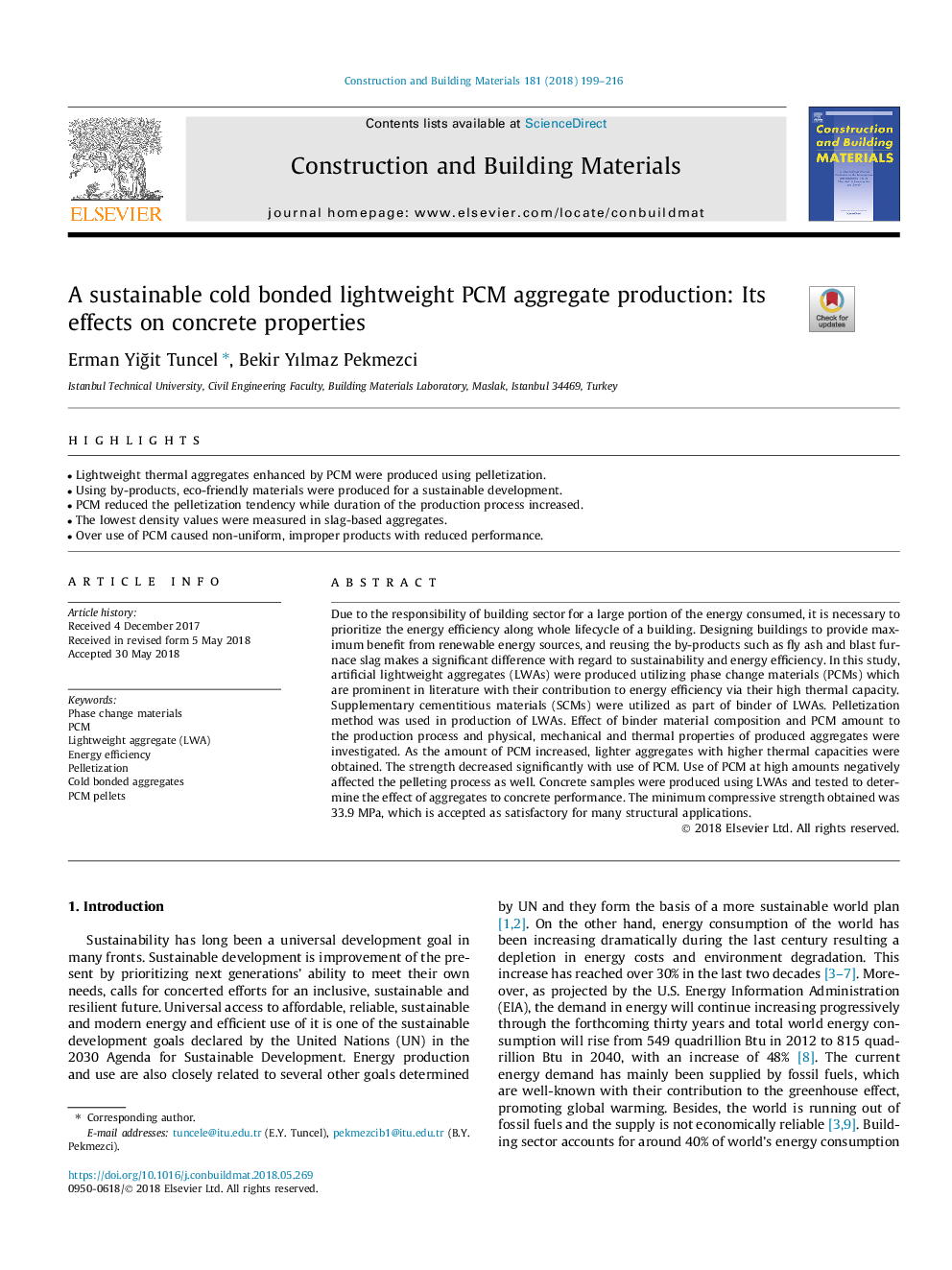| Article ID | Journal | Published Year | Pages | File Type |
|---|---|---|---|---|
| 6712416 | Construction and Building Materials | 2018 | 18 Pages |
Abstract
Due to the responsibility of building sector for a large portion of the energy consumed, it is necessary to prioritize the energy efficiency along whole lifecycle of a building. Designing buildings to provide maximum benefit from renewable energy sources, and reusing the by-products such as fly ash and blast furnace slag makes a significant difference with regard to sustainability and energy efficiency. In this study, artificial lightweight aggregates (LWAs) were produced utilizing phase change materials (PCMs) which are prominent in literature with their contribution to energy efficiency via their high thermal capacity. Supplementary cementitious materials (SCMs) were utilized as part of binder of LWAs. Pelletization method was used in production of LWAs. Effect of binder material composition and PCM amount to the production process and physical, mechanical and thermal properties of produced aggregates were investigated. As the amount of PCM increased, lighter aggregates with higher thermal capacities were obtained. The strength decreased significantly with use of PCM. Use of PCM at high amounts negatively affected the pelleting process as well. Concrete samples were produced using LWAs and tested to determine the effect of aggregates to concrete performance. The minimum compressive strength obtained was 33.9â¯MPa, which is accepted as satisfactory for many structural applications.
Related Topics
Physical Sciences and Engineering
Engineering
Civil and Structural Engineering
Authors
Erman YiÄit Tuncel, Bekir Yılmaz Pekmezci,
